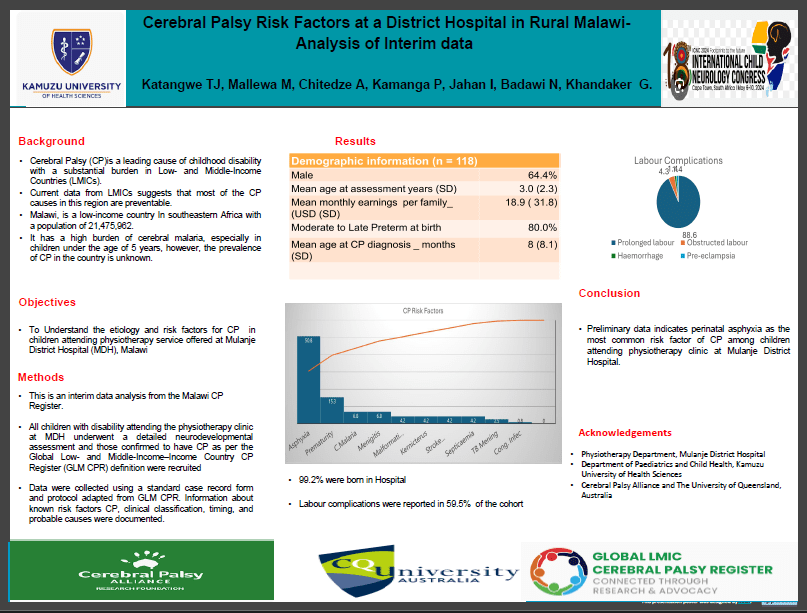Cerebral Plasy Risk Factors At A District Hospital In Rural Malawi - Analysis of Interim Data
Objective: To Understand the aetiology and risk factors of cerebral palsy (CP) in children attending the physiotherapy services offered at Mulanje District Hospital in Malawi.
Methods: This is an interim data analysis from the Malawi CP Register. All children with disability attending the physiotherapy clinic at Mulanje District Hospital underwent a detailed neurodevelopmental assessment and those confirmed to have CP as per Global Low- and middle- income country CP Register (GLM CPR) were recruited. Data were collected using a standard case record form and protocol adapted from the GLM CPR. Information about known risk factors of CP, clinical classification, timing and probable causes were documented. Results: Between May and August 2023, n=118 children with CP were recruited (mean (SD) age at assessment: 3.0 (2.3) y, 64.4% male). Overall, 80% of this cohort were moderate to late preterm infants at birth. Pre- and perinatal CP causes were the most reported CP risk factors (71.2%). Most children were born in hospital (62.7%) these births were attended by either a midwife or a medical doctor. Obstructed/ prolonged labour was reported in 94.3% of the births and spontaneous vaginal delivery was the frequently reported mode of delivery (80.5%). Instrumental delivery was used in 11.9%, whilst caesarean sections were done in 4.2%. The mean (SD) age for CP diagnosis in this cohort was 8months (SD=8.1).
Conclusion: Preliminary data indicates perinatal asphyxia as the most common risk factor of CP among children attending the Mulanje District Hospital in Malawi.
Thembi Katangwe
Kamuzu University of Health Sciences
Malawi
Mac Mallewa
Kamuzu University of Health Sciences
Malawi
Aaron Chitedze
Mulanje District Hospital
Malawi
Israt Jahan
Central Queensland Hospital and Health Service
Australia
Gulam Khandaker
Central Queensland Hospital and Health Service
Australia

Thembi Katangwe
Kamuzu University of Health Sciences
Malawi